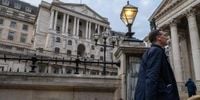On November 6, 2025, the Bank of England’s Monetary Policy Committee delivered a decision that kept the financial world on its toes: interest rates would remain at 4%, halting a series of steady, quarterly cuts that had marked the previous fifteen months. The nine-member committee split almost down the middle, with five voting to hold rates and four pushing for a 0.25% reduction to 3.75%. The deciding vote came from Governor Andrew Bailey, who indicated a preference for caution, saying he would “prefer to wait and see” if price rises continued to ease before making another move.
This tightly contested pause came against a backdrop of persistent, albeit slowing, inflation. In September 2025, the UK’s annual consumer price inflation stood at 3.8%—nearly double the Bank’s 2% target, but notably below both official forecasts and the 4% peak predicted just a few months earlier. According to the Bank’s Monetary Policy Committee, inflation has “likely peaked,” and policymakers now anticipate further declines in the coming months. However, the central bank’s own forecasts suggest inflation will not return to its 2% target until at least the second quarter of 2027.
As reported by Reuters, the Bank’s decision marked the first time since August 2024 that it had opted against a rate cut on its now-familiar three-month schedule. Since the rate-cutting cycle began, the Bank had trimmed borrowing costs in February, May, and August of 2025, each time by 0.25 percentage points. The current 4% rate is a far cry from the 5.25% peak reached in August 2023, itself the culmination of 14 consecutive hikes aimed at quelling the cost-of-living crisis and runaway inflation that gripped the country throughout 2022 and 2023.
“We still think rates are on a gradual path downwards, but we need to be sure that inflation is on track to return to our 2% target before we cut them again,” Governor Bailey explained, as cited by BBC and Reuters. His comments underscored the Bank’s cautious stance: while there is growing confidence that the worst of inflation is over, the risk of a premature rate cut—potentially reigniting price pressures—remains front of mind for several committee members.
The split within the committee was more pronounced than many economists had expected. Most polled by Reuters had anticipated a 6-3 vote in favor of holding rates, but the actual 5-4 split highlighted divergent views on the pace of disinflation and the risks facing the UK economy. Deputy Governors Sarah Breeden and Dave Ramsden joined the minority calling for a cut, with Breeden breaking ranks for the first time since joining the committee two years ago. The Bank’s minutes revealed that those pushing for a reduction were increasingly concerned about signs of weakening demand and a softening labor market, as job vacancies continued to fall and economic growth projections remained modest.
While the Bank’s decision may have disappointed some borrowers hoping for lower mortgage or business loan rates, it was a relief for many savers. As Kate Steere, a money expert at Finder, told The Independent, “Even holding the base rate at the last meeting didn’t stop providers from reducing their rates, with 9 major banks and building societies dropping rates in October and November. With households already facing uncertainty ahead of the Autumn Budget, a rate cut now would be a blow to savers. They’ve done the right thing by putting money away, yet they risk being punished with shrinking returns at a time when every pound counts.”
The decision to hold rates also reflected the delicate timing of the UK government’s upcoming budget, scheduled for November 26, 2025. Treasury chief Rachel Reeves has already signaled that tax increases are likely, aiming to reduce inflation and build “the strong foundations for our economy so we can continue to cut waiting lists, cut the national debt and cut the cost of living.” According to BBC, Reeves welcomed the Bank’s forecast that “inflation is due to fall faster than previously predicted.” However, the opposition was quick to criticize her approach, with Shadow Chancellor Mel Stride blaming persistent high rates on what he called Reeves’s lack of a credible plan.
Markets and analysts are now looking ahead to the next Monetary Policy Committee meeting on December 18, with many predicting that the combination of new economic data and the budget’s impact could tip the balance in favor of a rate cut. As Reuters noted, investors were pricing in roughly a 65% chance of a reduction in the Bank Rate next month. Ellie Henderson, an economist at Investec, summed up the prevailing sentiment: “It is now a question of timing, and whether a quicker pace of policy easing will be needed. A December rate cut certainly seems more likely after today.”
Underlying all this is a broader global context. The Bank of England’s approach has been more cautious than some of its peers: Britain’s inflation rate remains the highest among the Group of Seven major economies, and the Bank’s benchmark interest rate is currently double that of the European Central Bank. Meanwhile, the U.S. Federal Reserve has cut its own key interest rate twice in 2025, though Chairman Jerome Powell has cautioned that further reductions are not guaranteed, given ongoing economic uncertainty and internal divisions among Fed officials.
The Bank of England has also begun to overhaul the way it communicates its policy outlook, introducing more detailed summaries of individual committee members’ views and tweaking its guidance. Gone is the previous “gradual and careful approach” language; in its place, the Bank now states: “If progress on disinflation continues, Bank Rate is likely to continue on a gradual downward path.” Governor Bailey acknowledged that market expectations—two or three quarter-point cuts by the end of next year—were “close to a fair description of my position at present.”
Looking ahead, the Bank forecasts modest economic growth of 1.2% in 2026 and a slight uptick in unemployment as the jobs market cools. It also expects that households, despite holding high levels of savings, may be reluctant to ramp up spending in the face of uncertainty. For those watching from the sidelines—be they savers, borrowers, or policymakers—the coming weeks will be pivotal. The results of the government’s budget, fresh inflation and jobs data, and the next committee meeting in December will all shape the trajectory of the UK’s monetary policy as the country continues to navigate its way out of the inflationary storm of recent years.
For now, the Bank of England’s message is clear: patience, prudence, and a close eye on the data will guide the path forward.






